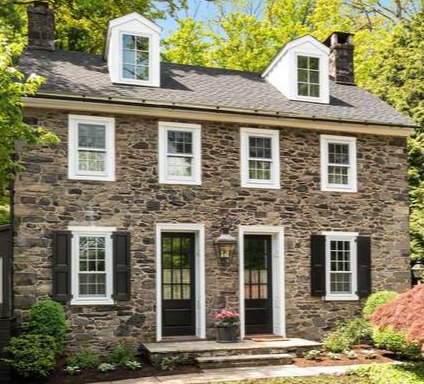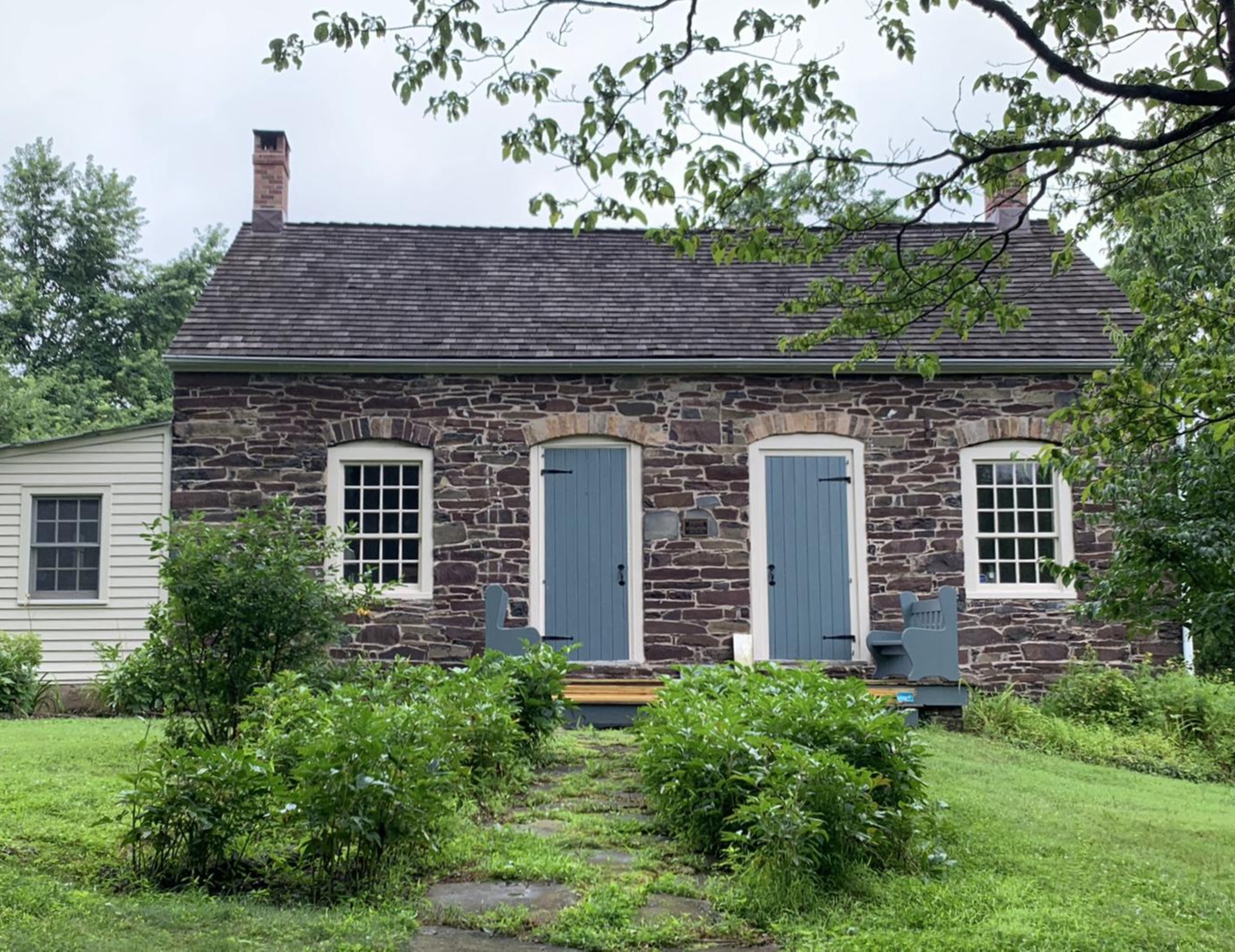

Why Does Our Old Home Have
Two Separate Front Doors?
The two easiest answers would be that it was once a two-family, twin home or an addition to the home added the second door. But what about all the early homes that show no evidence inside or out that the home was ever divided and the placement of the doors are clearly original?

I've heard many explanations from folks over the years:
• One is the “in” door and the other is “out”
• Extra ventilation - people didn’t bathe and cooking over an open fire stinks
• One door was for the residence and the other was for an in-home occupation
• The second door was for servants
• Churches and meetinghouses at that time had separate entrances for men and women. This tradition was also carried on at home or the home was used for worship services
• One of the doors was only used for family members' funerals
and my favorite,
• Families were huge and two exits were needed in case of a fire or urgent outhouse visit.
I view these as only fanciful descriptions of the previous uses of the two-door species. And they have the distinct scent of being folklorically derived.
There are some stories about the use of the two separate doors that have some credibility. These involve using one door for daily, domestic use while reserving the other for formal functions and receiving guests. One door usually opens into the “keeping room”, where cooking and other domestic functions occurred, and the other opens to a more formal parlor. While this particular separate uses of the two doors is the most plausible, I don’t feel it’s enough to drive a significant architectural style trend.
In my experience, the two-door house first appeared mostly in the Pennsylvania and New Jersey areas with some random examples scattered in the other middle colonies. Most of these homes were built during the time that the Georgian and Federal styles were most popular. The Georgian style is known for its visual balance, which requires strict symmetry, particularly in the placement of windows on the facade. Many true Georgian and

Federal style homes have a central entrance, flanked with even columns of windows. This accommodates a center hall in the middle of the home, dividing the two primary first floor rooms.
Many of the early communities in these colonies were established by settlers from different countries and unique religious beliefs and customs. A few of these groups’ customs had a common trait – an emphasis on plainness, simplicity and modest appearance. With this view, the center hall might seem more presumptuous than practical. If the division of a center hall is eliminated, the front entry placement would have to be off-center and enter only one of the two ground level rooms. Creation of a second, identical entrance resolved the symmetry issue.
In my region of Pennsylvania, this two-door symmetry appears most often in areas that have many English Quakers or Anabaptists from the Southern Germany region. There are even some known to be Dutch-built in areas of New Jersey. This style seems to have spread to the West and South during the 19th century. I’ve been told there are even some examples in Canada, at farms suspected of being built by relocated Pennsylvania Germans.


Bill Kibbel is a consultant and an inspector of historic homes
& commercial buildings at Heritage Building Inspections
Site was created with Mobirise